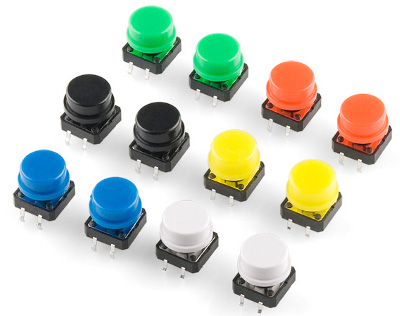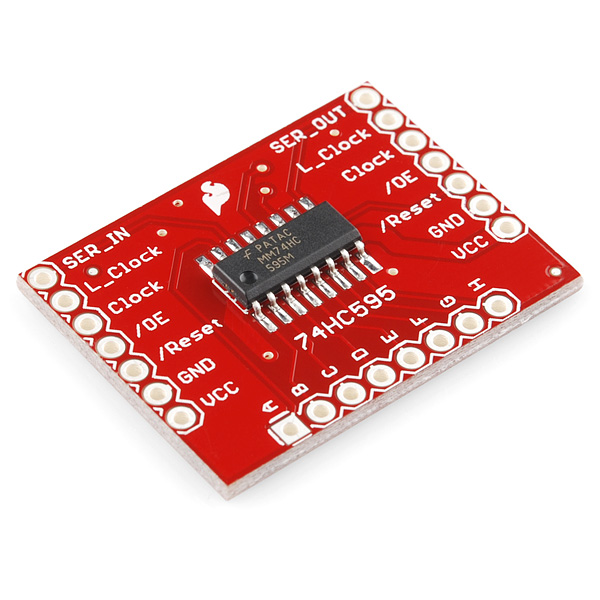Shift Registers
What is a Shift Register?
A shift register is a device that allows additional inputs or outputs to be added to a microcontroller.
This is accomplished by converting data between parallel and serial formats. A microprocessor communicates with a shift register using serial information, and the shift register gathers or outputs information in a parallel (multi-pin) format.
SIPO or PISO Shift Registers
Shift registers come in two basic types, either SIPO, Serial-In-Parallel-Out, or PISO, Parallel-In-Serial-Out. SparkFun carries both types. Here is a SIPO, the 74HC595, and the PISO, the 74HC165. The first type, SIPO, is useful for controlling a large number of outputs, including LEDs, while the latter type, PISO, is good for gathering a large number of inputs, like buttons.
SparkFun carries an easy to use breakout versions for both these chips as well. If you need more than 8 additional I/O lines, you can easily chain multiple shift registers together by connecting the output side of the breakout board to the right side of another board.


